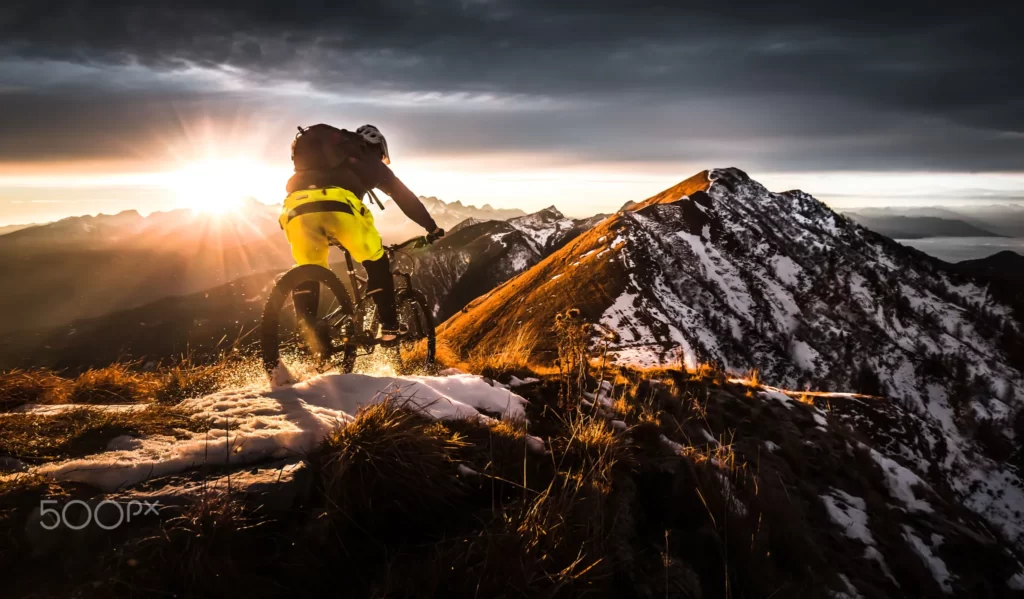Some people prefer not just to enjoy life, but to go to extremes and expose themselves to dangers that can turn any moment into the last. The most dangerous sports are those where adrenaline flows in the blood and every movement requires absolute concentration. So why do they choose them? For some it is a way to overcome fears, for others a unique opportunity to experience life up close. These extreme activities come with a high level of risk, which makes them both attractive and frightening.
Dangerous sports: The 5 deadliest high-risk sports
People love to tickle their nerves. Here are the most dangerous sports.

1. base jumping – jumping into the void
Base jumping is jumping from fixed objects: Bridges, skyscrapers, cliffs. In base jumping, quick decision-making is extremely important, because a mistake is not just a mistake, but a judgement. In contrast to traditional skydiving, base jumping is characterised by its proximity to the ground and the minimal time it takes to open the parachute. The equipment is as light as possible and every jump is a risk, where even the slightest gust of wind can be fatal.
The most dangerous sports often involve activities that are literally a matter of life and death. Base jumping is a prime example of this.
Topics:
- Burj Khalifa, Dubai – 828 metres. The tallest building in the world, which has become a favourite, albeit extremely dangerous, destination for base jumpers.
- Trolltunga, Norway – 700 metres. A cliff at a height that attracts many extreme climbers.
- New River Gorge Bridge, USA – 267 metres. The ‘Basejumping Day’ is held here every year.
- Eiffel Tower, Paris – 324 metres. Although jumping is officially prohibited here, several athletes have broken the ban for the fun of it.
- Cable car in Chamonix, France – 3842 metres. Jumps from this height are particularly difficult and require extreme preparation.
Risks and injury statistics
Injury statistics for extreme sports show base jumping to be one of the most dangerous sports. According to the data, the risk of death is 1 in 60, which is many times higher than with normal skydiving. Even experienced athletes are often unable to avoid injuries: Injuries to the legs, spine and head are constant companions of this extreme hobby. It is not uncommon for base jumpers to encounter unexpected gusts of wind or obstacles that can be fatal.
Adrenalin and freedom
What drives people to jump into the void even though they know all the dangers? The answer is simple: adrenaline. It is the moment when everything else but the flight ceases to exist, when thoughts are only focussed on controlling the body and the fall. Why do people do dangerous sports? Because of the feeling of absolute freedom and true oneness with the world around them.
2. skateboarding in a halfpipe – the point of no return
 Professional skateboarders reach great heights on the ramp, performing tricks that require not only precision but also complete confidence in their actions. One mistake and a fall is inevitable. The halfpipe is an area where every roll and every lift can lead to an injury. It is not for nothing that this sport is one of the most dangerous, as every trick requires maximum concentration and physical preparation.
Professional skateboarders reach great heights on the ramp, performing tricks that require not only precision but also complete confidence in their actions. One mistake and a fall is inevitable. The halfpipe is an area where every roll and every lift can lead to an injury. It is not for nothing that this sport is one of the most dangerous, as every trick requires maximum concentration and physical preparation.
Injuries and common mistakes
Skateboarding in a halfpipe is extremely traumatic. Athletes often suffer broken arms, sprains, head injuries and concussions. It is important to realise that even experienced skateboarders are not immune to mistakes. The difficulty of performing tricks and the unstable surface of the halfpipe often lead to loss of balance and falls that can result in serious injuries.
Adrenaline and drive
This sport is chosen by those who are not afraid to defy gravity and their own fears. Every trick is a moment of euphoria, when everything around you freezes and only the athlete and their board remain. Fans of extreme sports often describe this feeling as absolute freedom and an unrivalled feeling of elation.
3. surfing on big waves – friends with the ocean
A real challenge for the elements. The height of the waves can reach ten metres and more, and the power of the water is so great that it knocks over even the most experienced athletes. Surfers on big waves not only have to be able to catch the wave, but also distribute the forces correctly in order to survive in this dangerous battle. This sport is rightly on the list of risky sports, as any mistake can lead to tragedy.
Favourite locations:
- Joss Bay, Hawaii – up to 20 metres deep. One of the most famous surf spots, where waves can reach up to 25 metres in height.
- Nazari, Portugal – up to 30 metres deep. Some of the highest waves in the world have been recorded here, attracting experienced surfers.
- Pacific Ocean, Tavarua Island, Fiji – up to 15 metres deep. A popular spot known for its huge waves and challenging conditions.
- Mavericks, California, USA – up to 18 metres deep. A legendary spot where the waves can reach a height of over 15 metres and where extreme surfers compete every year.
- Tiaupu, Tahiti – up to 10 metres deep. The spot is famous for its powerful and fast waves, which pose a great risk even for professionals.
Danger of drowning and injury
Big waves are masses of water weighing tonnes that crash down on a person with incredible force. Injuries sustained by surfers include broken ribs, bruises, head and limb injuries. The greatest risk, however, is drowning. Many surfers report being swept away by a wave and then being unable to reach the surface for several seconds. Currents and whirlpools also add to the danger and make surfing big waves a real challenge.
Why do people love big waves?
The answer is the adrenaline and the feeling of being one with the ocean. For many, it’s a kind of meditation where you focus entirely on your body and the surrounding space and forget everything else.
4. mountaineering – the art of conquering heights
Mountaineering is a serious physical and psychological preparation. High altitudes, extreme weather conditions, the need to carry heavy equipment – all this makes it one of the most traumatic sports. Preparation for climbing takes months and even years, as every athlete must be prepared for all the possible dangers that await them along the way.
Favourite summits:
- Everest, Nepal/Tibet – 8,848 metres. The highest mountain in the world, which attracts thousands of mountaineers every year despite extreme weather conditions and altitude sickness.
- Kanchenjunga, Nepal/India – 8,586 metres. One of the most dangerous peaks, known for its avalanches and difficult routes.
- Kilimanjaro, Tanzania – 5,895 metres. The highest free-standing mountain in the world, popular with anyone who wants to try their hand at mountaineering.
- Aconcagua, Argentina – 6,961 metres. The highest peak in South America, the ascent of which is also associated with many dangers.
- Elbrus, Russia – 5,642 metres. The highest mountain in Europe, often used for training before more difficult climbs.
Injuries and fatal risks
The greatest risk in mountaineering is a fall. A mistake in insurance or a wrong step can cost lives. In addition, mountaineers are often confronted with problems such as lack of oxygen, frostbite, avalanches and falling rocks.

Conclusion
 The most dangerous sports are the favoured lifestyle for those who are prepared to go to extremes to experience sensations that are impossible in everyday life. Base jumping, skateboarding, surfing, mountaineering – each activity is a challenge that requires maximum effort. But it is precisely this challenge that makes them so appealing: Overcoming fear, pain and danger creates a real sense of freedom and joy.
The most dangerous sports are the favoured lifestyle for those who are prepared to go to extremes to experience sensations that are impossible in everyday life. Base jumping, skateboarding, surfing, mountaineering – each activity is a challenge that requires maximum effort. But it is precisely this challenge that makes them so appealing: Overcoming fear, pain and danger creates a real sense of freedom and joy.
 en
en  ru
ru  de
de  ar
ar  es
es  nl
nl  hi
hi  fr
fr  it
it  pt
pt  el
el 










